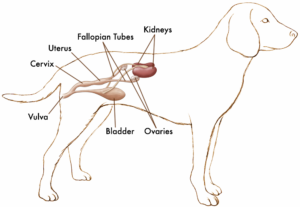
Identification of Dogs Receiving Hormone Sparing Sterilization
Dogs that have received hormone-sparing sterilization may look like they’re still intact. A standard identification or marking would make it clearer that they’ve been sterilized.

Dogs that have received hormone-sparing sterilization may look like they’re still intact. A standard identification or marking would make it clearer that they’ve been sterilized.

Hormone-sparing sterilization procedures — like hysterectomy (also called ovary-sparing spay) for females and vasectomy for males — are ways to sterilize pets without the negative impacts from hormone loss. This page includes details of the procedures.

Research on dogs has shown that the lack of natural hormones resulting from spay/neuter can lead to other serious health complications. This page provides an overview of the research on the health effects of spay or neuter.

Spaying or neutering sterilizes a pet by removing reproductive organs. The loss of the hormones naturally produced by those organs can create health problems, such as cancer and joint disorders. Hormone restoration therapy for dogs aims to prevent or reduce such problems.

Hormone-sparing sterilization methods ensure population control while guarding the lifetime wellbeing of dogs.

A single intratesticular injection of a solution of calcium chloride dihydrate can chemically neuter male animals, providing an inexpensive, non-surgical sterilization for pets.
And if you don’t find a match there, this slightly more complex clinical trials finder includes studies sponsored by companies as well:
